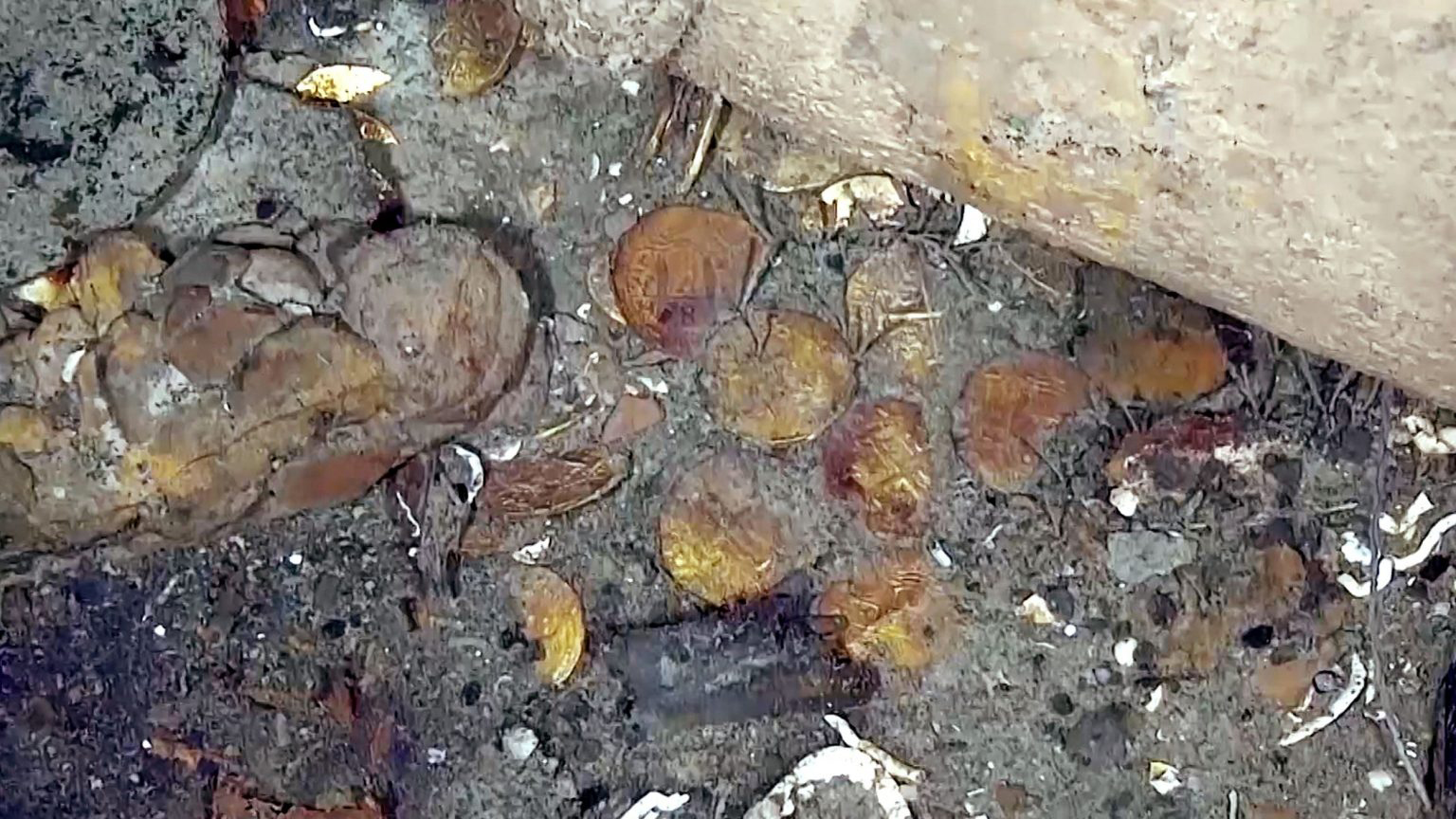$17 billion shipwreck near Colombia is remarkably preserved, new photos reveal
The Colombian government claims ownership of the ship and its treasure.

New images of one of the world's most valuable shipwrecks show its remarkable preservation on the seafloor off the coast of Colombia — while the search has revealed two more historic shipwrecks in the same area.
The latest photographs and video of the wreck of the San José treasure galleon were released by the Colombian navy on June 6.
The ship was loaded with an estimated $17 billion worth of gold, silver and jewels when it sank in 1708, and its wreck was only discovered in 2015. The navy used a remotely operated underwater vehicle (ROV) to examine the wreck; its precise location is being kept a secret to deter treasure hunters.
The new images show that the wooden hull of the San José is covered in marine growth — ocean species that colonize substrate and shipwrecks — but is still remarkably intact after more than 300 years beneath the waves.
A spokesperson for the Colombian navy said cannons, coins and gold bars can be seen lying exposed on the seafloor, as well as a delicate set of porcelain tableware in perfect condition.
Related: Colombia moves to salvage immense treasure from sunken Spanish galleon
In many cases the preservation is so good that the searchers can read inscriptions on the objects. "With the inscriptions discovered, it was possible to determine the manufacturing sites of the ship’s cannons: in Seville and Cádiz, in the year 1655," said Adm. José Joaquín Amézquita, the Colombian navy's maritime director-general, said in a statement. "You also can see the different objects of gold, including the 'macuquinas' [a type of coin] and the date they were minted."
Get the world’s most fascinating discoveries delivered straight to your inbox.
Experts think that the shipwreck and its artifacts may be so well preserved because the San José sank to a considerable depth — around 2,000 feet (600 meters) — far below the reach of the sunlight that sustains many marine organisms.
Navy experts also discovered two other wrecks on the seafloor nearby — one of a ship from the colonial period (from the arrival of the Spanish in about 1525 until the early 1800s) and the other of a roughly 200-year-old schooner. The origins of both ships are unknown.
Contested ownership
The San José wreck and its valuable contents are at the center of an international legal row. The Colombian government claims ownership of the shipwreck and all the treasures it contains, and the Colombian navy is monitoring the site on the seafloor, which rests near the Barú peninsula, south of Cartagena.
However, the ship belonged to the Spanish navy when it was sunk by British warships in 1708, and under international law Spain still owns the San José and everything it contains.
In 2018, the United Nations Educational, Scientific and Cultural Organization (UNESCO) advised Colombia not to salvage the wreck, the Associated Press reported.
But Colombia's government has declared that the wreck and all its treasure belong to them, and it has asked prospective salvagers to register their interest in recovering it.
Treasure ship
According to the Spanish naval history website Todo a Babor ("All to Port"), the San José was a 62-gun galleon of the Spanish navy. In 1708, it led a treasure fleet of three warships and 14 merchant vessels from Portobelo in Panama to Cartagena, a major port city on Colombia's Caribbean coast, where the ships intended to shelter during the approaching hurricane season before crossing the Atlantic Ocean to Europe. Historical records report that the San José galleon was laden with roughly 200 tons (180 metric tonnes) of gold, silver and jewels.
But the convoy was intercepted in early June that year by British navy warships. During the ensuing battle, the San José exploded when its stores of gunpowder ignited. About 600 of the crew and passengers on board the galleon were killed.
The whereabouts of the San José wreck remained unknown until the 1980s, when an American salvage company claimed it had located the site and attempted to negotiate with the Colombian government for its recovery.
Colombia's government declined, however, and in 2015 it announced the San José wreck had been located independently by maritime archaeologists working with the Colombian navy.
The wreck site's considerable depth makes recovery expensive and complex; so far, no physical steps have been taken to salvage the ship or its treasure.
Colombia’s president, Iván Duque, said that the monitoring of the wreck by the Colombian navy would guarantee its protection as a "world heritage site."
But he also hinted at his government’s assertion that Colombia owns the San José shipwreck and everything onboard it, adding that artifacts from the wreck would be displayed in museums.
"The idea is to recover it and have sustainable financing mechanisms for future extractions," Duque said. "In this way the treasure, the heritage of the San José galleon, is protected."
Editor's note: Updated at 9:41 a.m. EDT on June 28 to add that the 600 fatalities from the sinking of the San José galleon included passengers, not just crew members.
Originally published on Live Science.
Tom Metcalfe is a freelance journalist and regular Live Science contributor who is based in London in the United Kingdom. Tom writes mainly about science, space, archaeology, the Earth and the oceans. He has also written for the BBC, NBC News, National Geographic, Scientific American, Air & Space, and many others.




